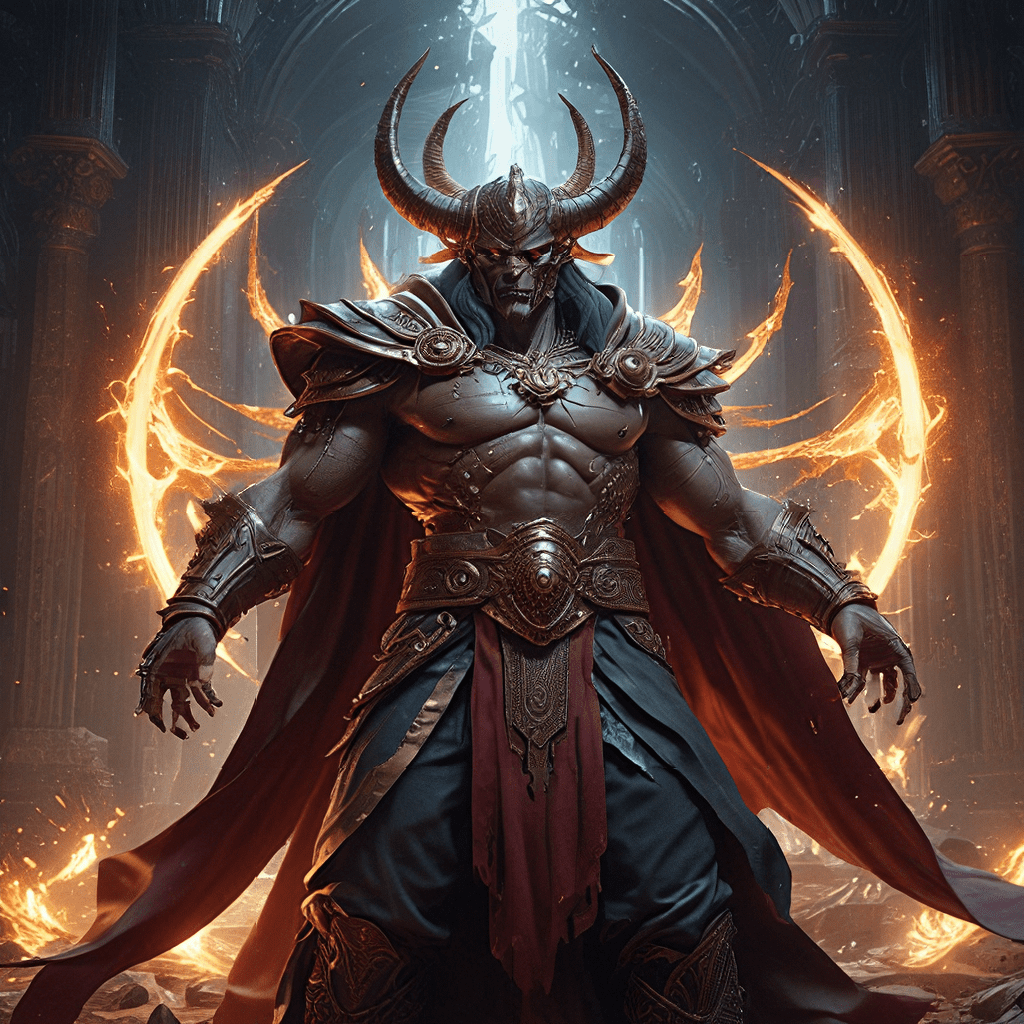Set: The God of Violence
In ancient Egyptian mythology, Set is a complex and fearsome deity often associated with chaos, violence, and the untamed wilderness. He is a force of disruption, a symbol of primal instincts, and a powerful figure who challenges the established order. But Set is more than just a destructive force; he also embodies aspects of fertility, protection, and even the underworld.
1. The Mythology of Set: Chaos and Disorder
Set’s role in Egyptian mythology is deeply intertwined with chaos and disorder. He is often depicted as a storm god, associated with deserts, storms, and the unpredictable forces of nature. His presence brings disruption, unpredictability, and a challenge to the established order. He represents the wild, untamed aspects of the world, a stark contrast to the order and stability of the divine realm.
Set’s association with chaos makes him a fascinating and complex figure. He is not simply a villain; he is a force of nature, embodying the unpredictable forces that can both destroy and create. His presence reminds us that even in the most ordered world, chaos lurks, and it is through the balance of these forces that life continues.
2. Set’s Origins and Family Ties
Set is the son of Geb, the earth god, and Nut, the sky goddess. He has three siblings: Osiris, Isis, and Nephthys. The exact circumstances of Set’s birth are shrouded in conflicting accounts, adding to his enigmatic and mysterious nature. Some myths describe him as a vengeful and destructive force from the very beginning, while others portray him as a more nuanced and complex figure.
Set’s family ties are central to his role in Egyptian mythology. His rivalry with his brother Osiris, culminating in the murder of Osiris, is one of the most famous and influential myths in ancient Egypt. This story highlights the tensions between order and chaos, and the struggle for power within the divine realm.
3. Set’s Character: A Force of Destruction
Set is often portrayed as a violent and unpredictable god. He is associated with animalistic traits, particularly aggression, ferocity, and a lack of restraint. His character is often depicted as savage and untamed, contrasting sharply with the more civilized and orderly gods of the Egyptian pantheon.
While Set’s violent nature makes him a fearsome figure, it also connects him to the primal forces of nature. He represents the raw power and untamed energy that lies beneath the surface of the world. His presence reminds us that even within the realm of the gods, powerful and unpredictable forces exist, and that even the most stable order can be challenged.
4. The Myth of Osiris and the Murder of the God of the Underworld
The myth of Osiris and the murder by Set is a pivotal story in Egyptian mythology. It explores themes of jealousy, revenge, and the consequences of violence. The story tells of Set’s envy and hatred for his brother Osiris, who had become the ruler of the underworld. Driven by jealousy, Set tricked Osiris and killed him, dismembering his body and scattering the pieces across the land.
This act of violence had profound consequences for the divine realm and the world of mortals. It led to the establishment of the underworld as a place of judgement and the cycle of death and rebirth. It also set the stage for a cosmic battle between Set and Horus, the son of Osiris, who sought to avenge his father’s death.
5. The Struggle Between Order and Chaos: Set and Horus
The struggle between Set and Horus is a central theme in Egyptian mythology. Horus, the son of Osiris, represents order, justice, and the rightful heir to the throne. He embodies the principles of civilization and the rule of law. Set, on the other hand, is the force of chaos, seeking to disrupt the established order and claim power for himself.
Their battle is a cosmic struggle for control of Egypt and the fate of humanity. It represents the eternal clash between the forces of order and chaos, and the constant struggle for balance in the world. The myth of Set and Horus reminds us that even in the most ordered societies, the forces of chaos can always rise to challenge the status quo.
6. Set’s Symbolism and Representation: The Animal of Violence
Set is often depicted in animal form, typically as a creature with a long snout and powerful claws. This animal, known as the Set animal, is a potent symbol of his violent and untamed nature. It represents the primal forces of nature, the raw power and aggression that can both destroy and create.
In hieroglyphics and art, Set is often represented with specific symbols, including a red crown, a scepter, and a serpent. These symbols reflect his association with the desert, his power, and his connection to the underworld. His representation in art and mythology reinforces his role as a powerful and complex figure.
7. Set’s Role in the Underworld: The Guardian of the Dead
Despite his association with destruction and chaos, Set also plays a significant role in the underworld. After his battle with Horus, Set was relegated to the realm of the dead. He became a guardian of the Afterlife, overseeing the underworld and ensuring the proper passage of souls. This transition from a force of destruction to a guardian of the dead reflects the complexity of Set’s character.
Set’s role in the underworld highlights the duality of his nature. He is both a destroyer and a protector, a force of chaos and a guardian of the dead. This complexity makes him a compelling and enduring figure in Egyptian mythology.




